Price:₹35,000.00
Char Dham Yatra in Uttarakhand India Himalayas Dev Bhoomi
Char Dham Yatra – Uttarakhand is a state which has been depicted in the Purans by names like Dev bhoomi (LAND OF GODS), punyabhoomi, rishiyon se youktbhoomi(land full of sages).
A state in where many gods and goddesses reside, a state where mother Ganga moves ahead purifying everyone with her holy water,
“One such holy place in -Uttarakhand” where is situated – 5 badri, 5 Kedar, 5 priyag.
Yamunotri, Gangotri, Kedarnath and Badrinath are the four pilgrimage sites located in Indian Himalayas away from pollution in soothing climate and invigorating greenery at different districts “Uttarakhand”.
These 4 holy places known as “char Dham” where ‘char’ means- four and dham refers to ‘religious destination’ and their journey is known as “Tirthyatra” (pilgrimage), where thousands of devotees not only India but also from abroad comes to visit.
Char Dham Yatra is a pilgrimage tour that covers four sacred Hindu temples located in the state of Uttarakhand, India. The four temples are Yamunotri, Gangotri, Kedarnath, and Badrinath.
Here are some highlights of each temple:
- Yamunotri: Located at an altitude of 3293 meters above sea level, Yamunotri temple is dedicated to the goddess Yamuna. The highlight of the temple is the hot water springs called “Janki Chatti” and “Surya Kund,” which are believed to have medicinal properties.
- Gangotri: Located at an altitude of 3100 meters above sea level, Gangotri temple is dedicated to the goddess Ganga. The highlight of the temple is the Gangotri Glacier, which is the source of the river Ganga.
- Kedarnath: Located at an altitude of 3583 meters above sea level, Kedarnath temple is dedicated to Lord Shiva. The highlight of the temple is its stunning location amidst the Himalayan range and the trek that leads to the temple.
- Badrinath: Located at an altitude of 3133 meters above sea level, Badrinath temple is dedicated to Lord Vishnu. The highlight of the temple is the natural hot water springs called “Tapt Kund” and the beautiful scenery surrounding the temple.
Overall, the Char Dham Yatra is a spiritually uplifting and physically challenging pilgrimage that attracts devotees from all over India and the world. It is a journey that combines natural beauty, adventure, and devotion.
According to Hindu belief, since when did Char Dham Uttarakhand, Yamunotri, Gangotri, Kedarnath, and Badrinath start?
Char Dham in Uttarakhand, comprising Yamunotri, Gangotri, Kedarnath, and Badrinath, has been regarded as sacred pilgrimage sites in Hinduism for centuries. While there is no definitive historical record specifying the exact dates of their establishment, these pilgrimage sites have a rich mythological and religious significance.
According to Hindu mythology and legends, the origins of the Char Dham can be traced back to ancient times. It is believed that Yamunotri, the source of the Yamuna River, has been revered since the time of the sage Asit Muni, who used to reside in the area. Gangotri, the origin of the Ganges River, is associated with the sage Bhagiratha, who performed severe penance to bring the river down from heaven to cleanse the sins of his ancestors.
Kedarnath, located in the Garhwal Himalayas, is believed to have been established by the Pandavas from the Hindu epic Mahabharata. It is said that after the great Kurukshetra war, the Pandavas sought Lord Shiva’s forgiveness for the bloodshed and went on a pilgrimage. Lord Shiva, however, eluded them and manifested himself in the form of a bull at Kedarnath. The Pandavas eventually found Lord Shiva and built the Kedarnath temple at the same location.
Badrinath, situated in the Chamoli district, is associated with Lord Vishnu. It is believed that Lord Vishnu meditated here for thousands of years under a Badri tree. The current Badrinath temple is said to have been established by the sage Adi Shankaracharya in the 8th century CE, although there might have been earlier temples at the site.
While the historical records may not provide precise dates, the religious and mythological significance of these sacred sites has been deeply ingrained in Hindu culture for a long time. Pilgrims from around the world continue to visit these holy places as part of their spiritual journey.
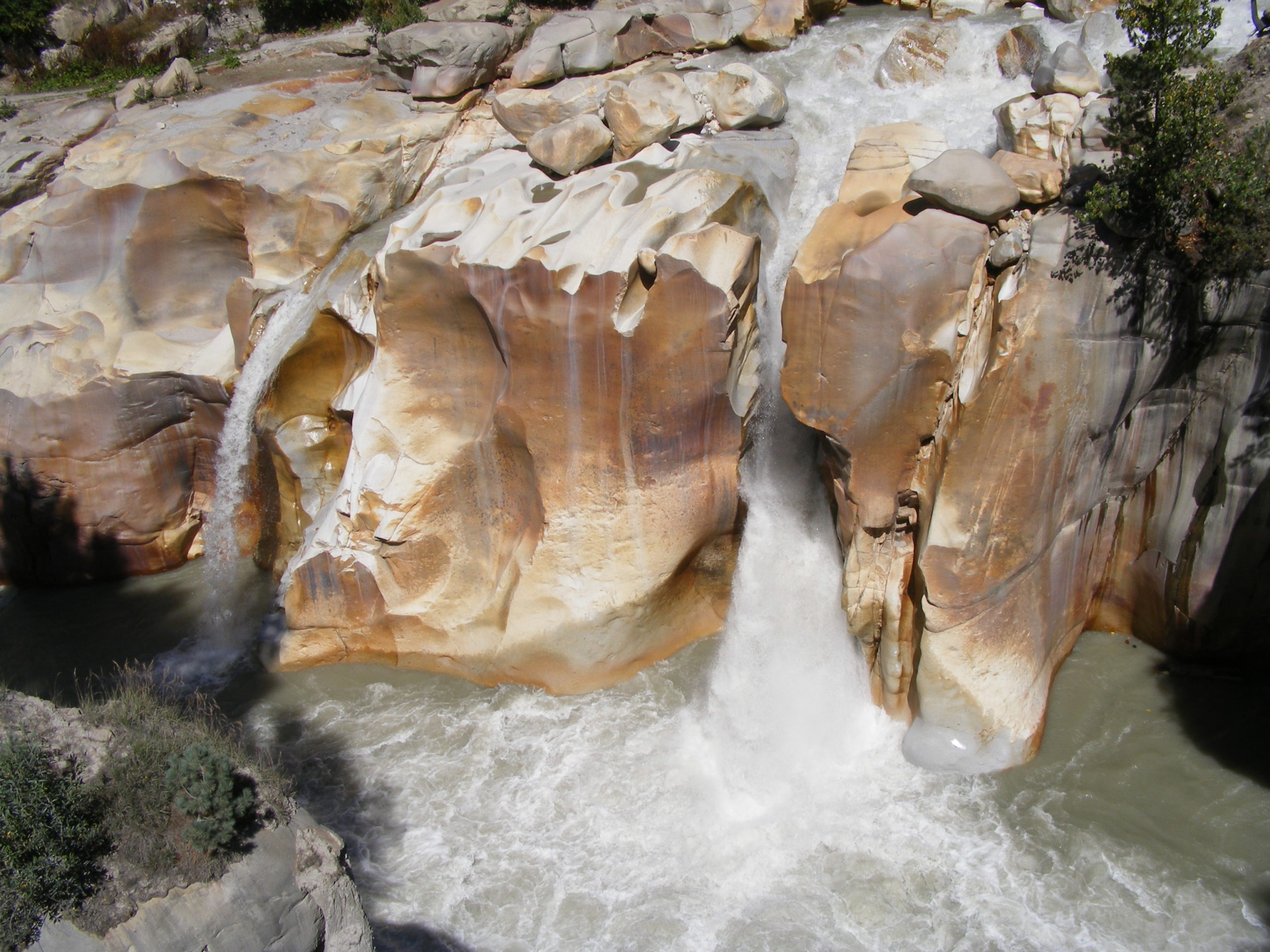
Beliefs for Char Dham Yatra
“Char Dham” holds a great position in Hindu Mythology and people believe that it is important to go for this yatra once in a lifetime in a clockwise direction to get salvation and overcome all the sins. It is great for the people who are in search of spirituality and tranquillity. In the puranas,
Char dhamyatra is done in a sequence from west to east
- Yamunotri
- Gangotri
- Kedarnath
- Badrinath
History of Char Dham Yatra
The above four pilgrimage site have their own mythological history which has made these places great holy sites. There are several reasons why people undertake the Char Dham Yatra:
Religious Significance: For devout Hindus, the Char Dham Yatra is an important pilgrimage that is believed to cleanse them of their sins and earn them blessings from the deities. It is believed that visiting the Char Dham shrines brings spiritual upliftment and helps one attain moksha or liberation from the cycle of birth and death.
Adventure and Trekking: The Char Dham Yatra involves a trek through the picturesque Himalayan landscapes, including mountain passes, glaciers, and river crossings. For adventure enthusiasts and nature lovers, this trek provides a unique opportunity to explore the natural beauty of the region.
Cultural Experience: The Char DhamYatra also provides a cultural experience, as it involves interacting with the locals, experiencing their way of life, and learning about the customs and traditions of the region.
Overall, people undertake the Char Dham Yatra for different reasons, but the common thread that binds them is the belief that the journey will bring them closer to the divine and help them find spiritual fulfillment.

YAMUNOTRI DHAM
GODDESS Yamuna is the daughter of lord surya and sister of yamraj. It is said in the puranas that a saint(sage) named “Asti muni” used to live here, when he could not go to Gangotri at the time of old age, so he did penance, which mother ganga was pleased and started flowing in Yamuna, And he had bath in Ganga and Yamuna.
Yamunotri which is a major dham located in Uttarkashi district of Uttarakhand, Which is the source of river Yamuna
Yamuna River is the second holiest river in India after the Ganga, which is the largest tributary of Ganga.
Pilgrimage time the doors of Yamunotri temple are opened on akshayatritiya of Shukla paksha of vaishakh month (May) and closed on Yama dwitiya of kartik month (November).
Yamunotri temple is situated at 3291 m above of sea level, which was built in 1839 by the king of Tehri “sudarshan shah”.
It is believed that bathing in the water here purifies the soul and washes away all sins.
Hot water spring are present around this temple and surya Kund is the most important of them, where pilgrims cook potatoes and rice and take them as Prasad.
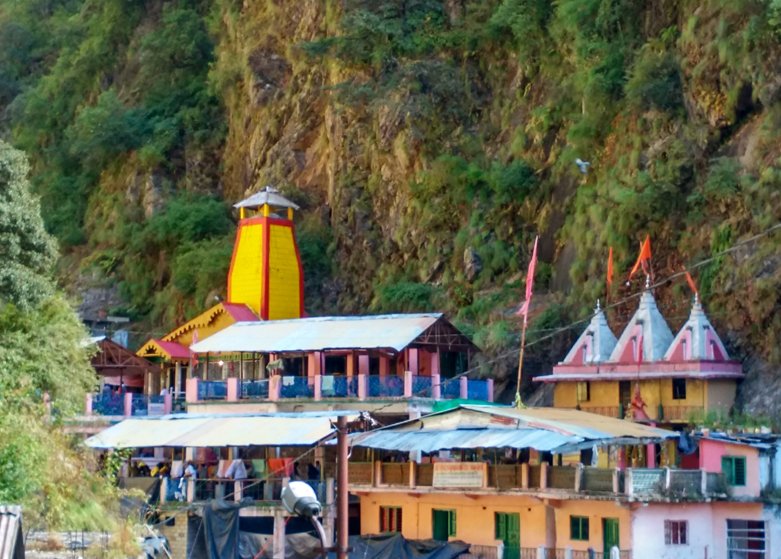
GANGOTRI DHAM
Gangotridham – which is a major Hindu pilgrimage center located in Uttarkashi district of Uttarakhand state of India.at a distance of 19 km from Gangotri is -Gomukh, which is the last end of the Gangotri glacier and the origin of the Ganga River. It is written in the puranas that during the Ashwamedhayagya, king sagar sent his 60,000 sons in search of a horse which was lost, all the sons went to the hermitage of saint Kapil in search of the horse, who was in deep meditation at that time, he raised the engrodded sage Kapil in meditation, due to the sage got angry and cursed him and consumed him. To give salvation to prince’s Bhagirathi’s extreme meditation made the goddess Ganga comes down to earth.
Pilgrimage time the doors of Gangotri temple are opened on akshayatritiya of Shukla paksha of vaishakh month (May) and closed on Yama dwitiya of kartik month (November).
The Ganga River is considered the most sacred of the river of India and it is believed that bathing in the Ganges destroys all the sins of human. After death people consider that it is necessary to immerse the ashes in the Ganges to attain salvation, Gangotri temple is situated at 3042 m above of sea level which was built in 19th century by the king of naipal “Amar Singh Thapa”.
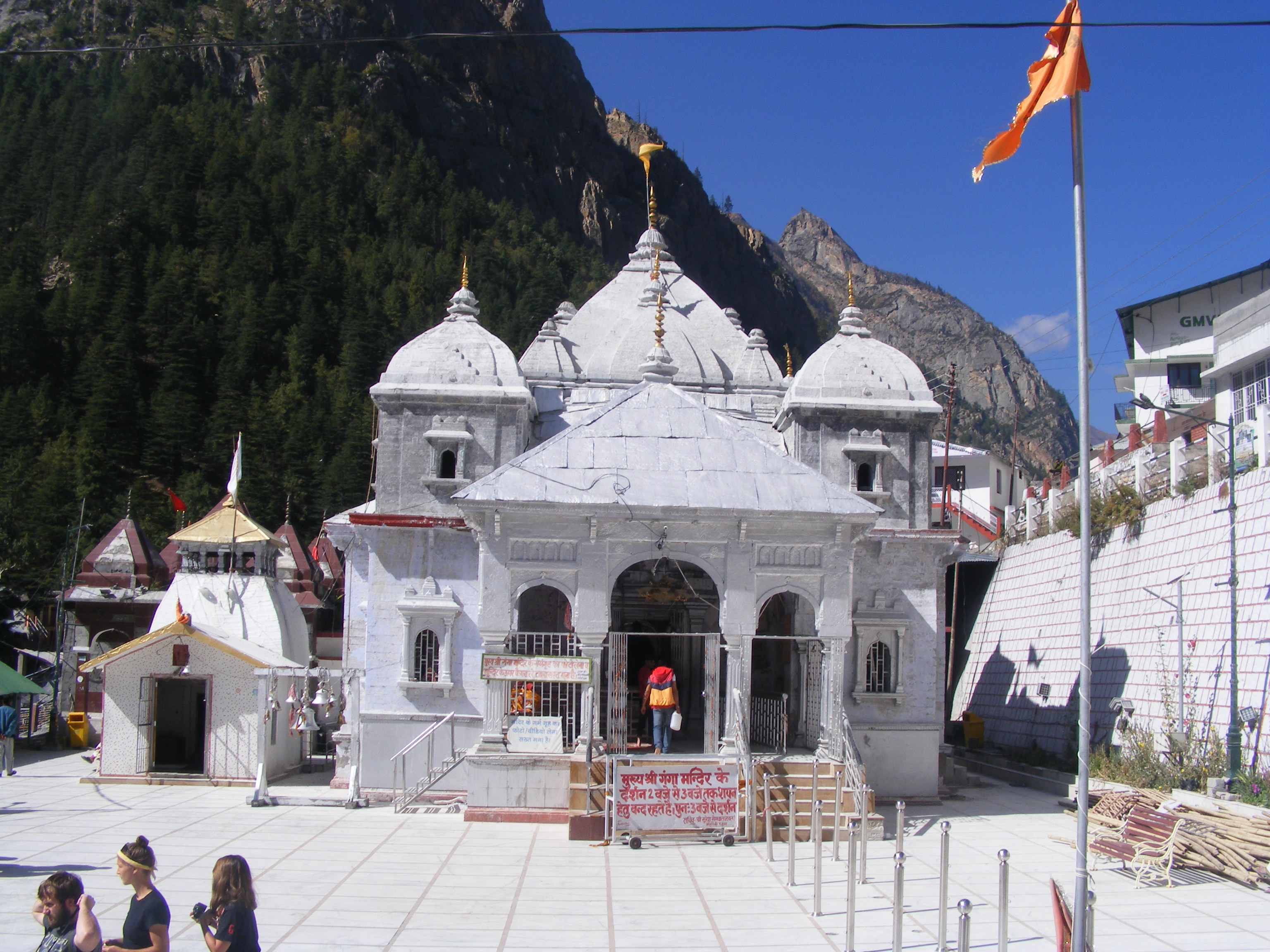
KEDARNATH DHAM
KEDARNATH– is the most important Hindu pilgrimage center located in rudraprayag district of Uttarakhand state of India. Which is 86 km from rudraprayag. The Shivling of Kedarnath temple located here is one of the twelve Jyotirlingas. In Hinduism, Kedarnath is counted among the Chardham and five kedars.
It is written in the ‘puranas’ that Pandavas wanted lord Shiva to forgive them for their sins which they had committed by killing their brothers “kauravas” in the battle of Mahabharata, but lord Shiva did not want to forgive them and turned himself into a bull and when the Pandavas know about them that this bull is lord shiv, then lord shiv entered the ground which was caught by Bhīma from behind. Due to this reason the mouth of the bull remained in naipal and back part remained in Kedarnath.
All the part of Shiva differentiated at different places- like hump at Kedarnath, navel at MadhMaheshwar, hair at Kalpeshwar, face at Rudranath and arms at Tungnath. And all these five holy places known as PanchKedar.
Pilgrimage time the doors of Kedarnath temple are opened on Baishak month (April-May) and closed on kartik month (October-November).
Kedarnath temple is situated at 3583 m above of sea level which was made by Pandavas and Saint AdiShankaracharya made a temple next to it in the 8th century.
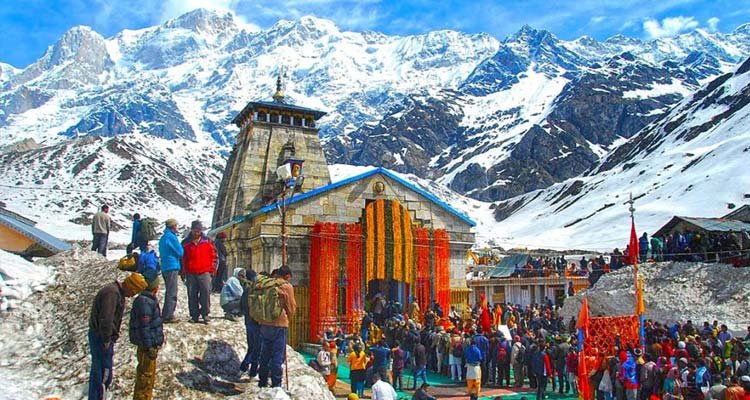
BADRINATH DHAM
Badrinath Dham – which is a major Hindu and Jain pilgrimage center located in Chamoli district of Uttarakhand state of India. This Dham is also dedicated to lord adinath, the 1stTirthankar of Jainism, Badrinath Dham is situated on the banks of river Alaknanda. It is written in the ‘puranas’ that Lord Vishnu meditated here as an act of penance his wife goddess Laxmi became a tree and protected him from the tough nature elements.
Saint Adishankaracharya found the idol of lord Vishnu in the Alaknanda River and shankaracharya placed it in a cave around the TaptKund.
Pilgrimage time the doors of Badrinath temple are opened on basantpanchami (April-May) and closed on kartik month (October-November).
Badrinath temple is situated at 2800m above of sea level, Garhwal kings erected the temple and it has been reconstructed many times.
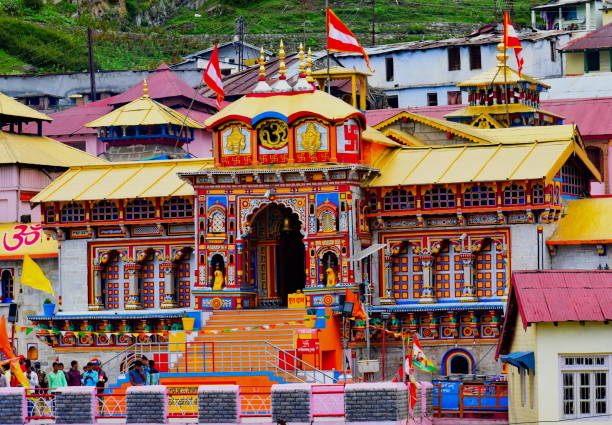
Best Time to Do Char Dham Yatra
The perfect time to go on this Yatra is from May to October. The gates of these holy sites are closed during monsoon and winter season because the areas receive heavy snowfall in winters and are prone to landslides in monsoon. The routes get blocked and the idols shifted the pilgrim sites which are nearby.
Temperatures- Yamunotri, Gangotri, Kedarnath, and Badrinath. The temperatures in this region can vary depending on the time of year and the altitude of each shrine.
In April, the temperatures in the Char Dham Yatra region can be quite cold, especially at higher altitudes. The average temperature in Yamunotri and Gangotri during this time is around 10°C to 15°C during the day, and it can drop down to 0°C or even below at night. Similarly, the temperature in Kedarnath and Badrinath during April is around 5°C to 10°C during the day, and it can drop below freezing at night. It is important to carry warm clothing and other necessary items to protect yourself from the cold weather.
By mid-October, the temperatures start to drop as winter approaches. During this time, the average temperature in Yamunotri and Gangotri is around 5°C to 10°C during the day, and it can drop to 0°C or below at night. Similarly, the temperature in Kedarnath and Badrinath during mid-October is around 0°C to 5°C during the day, and it can drop below freezing at night. It is important to carry warm clothing, including jackets, gloves, and hats, to protect yourself from the cold weather during this time.
It is recommended to plan your Char Dham Yatra during the summer months, from May to June or September to October, when the temperatures are more pleasant and the weather is generally clear and favorable for travel. However, it is always important to check the weather forecast before embarking on your journey and prepare accordingly.
Why start the char dham yatra from Haridwar?
Haridwar holds immense significance in Hinduism and is considered one of the holiest cities in India. It is believed to be the gateway to the Char Dham pilgrimage in Uttarakhand. There are several reasons why the Char Dham Yatra traditionally starts from Haridwar:
- Spiritual Cleansing: Haridwar is located at the confluence of the sacred rivers Ganga and Yamuna. Taking a dip in the holy waters of the Ganges in Haridwar is believed to cleanse one’s sins and purify the soul. By beginning the Char Dham Yatra from Haridwar, pilgrims seek spiritual purification before embarking on the journey to the four sacred sites.
- Traditional Importance: Haridwar has been a prominent pilgrimage destination for centuries. It is mentioned in ancient Hindu scriptures and epics like the Mahabharata. The city has a rich cultural and religious heritage, and starting the Char Dham Yatra from this revered place is a way to honor that tradition.
- Accessibility: Haridwar is well-connected by road, rail, and air, making it easily accessible for pilgrims from different parts of India and abroad. It serves as a convenient starting point for the Char Dham Yatra as it provides infrastructure and transportation facilities for the pilgrimage.
- Blessings of the Divine: Haridwar is home to numerous temples and ashrams, attracting spiritual seekers and devotees. It is believed that commencing the Char Dham Yatra from Haridwar allows pilgrims to seek the blessings of the deities and saints residing in the city before embarking on the arduous journey to the high Himalayas.
- Cultural Significance: Haridwar hosts various religious festivals and fairs throughout the year, drawing large crowds of devotees. The city is known for its vibrant and grand celebrations, such as the Kumbh Mela. Starting the Char Dham Yatra from Haridwar allows pilgrims to immerse themselves in the cultural and religious fervor of the place.
These reasons, coupled with the spiritual and historical importance of Haridwar, make it an ideal starting point for the Char Dham Yatra. It sets the tone for the pilgrimage and prepares the pilgrims for the sacred journey ahead
How to reach Haridwar from Delhi and others city’s ?
- By Train: Haridwar is well-connected to Delhi by train, and there are several trains that operate between the two cities. Some of the popular trains include the Shatabdi Express, Jan Shatabdi Express, and the Haridwar Mail. The journey takes around 4 to 5 hours, depending on the train and the route.
- By Bus: There are regular bus services from Delhi to Haridwar, operated by both government and private operators. The journey takes around 6 to 7 hours, depending on the traffic and the route.
- By Car: Haridwar is around 220 km from Delhi, and it takes around 5 to 6 hours to reach Haridwar by car. You can either hire a taxi or drive your own vehicle.
- By Air: The nearest airport to Haridwar is the Jolly Grant Airport in Dehradun, which is around 35 km from Haridwar. From the airport, you can take a taxi or a bus to reach Haridwar.
Overall, the most convenient and comfortable way to reach Haridwar from Delhi is by train. However, depending on your budget and preferences, you can choose any of the other options as well.
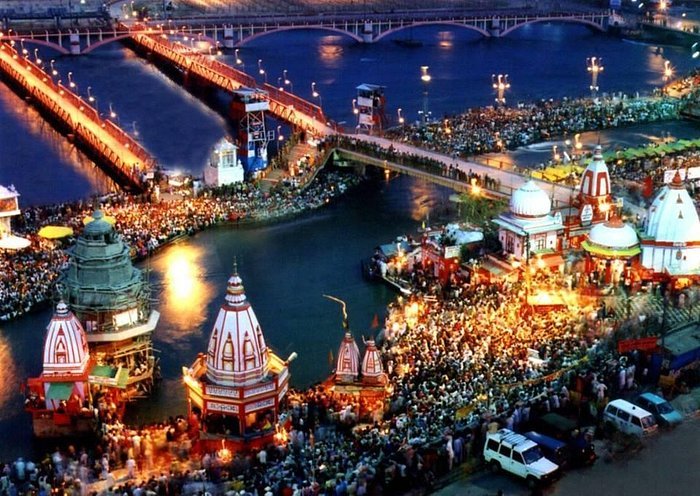
Himalayan Hikers provide you safety during Char Dham Yatra
Himalayan Hikers is a reputable trekking company that places a high priority on safety. Here are some of the safety measures they take to ensure the safety of their clients during yatra
- Experienced Guides: Himalayan Hikers hires experienced and certified guides who are well-versed in the terrain, weather conditions, and local culture. These guides have first-hand knowledge of the routes and are equipped to handle any emergency situations that may arise.
- Proper Gear: The Company provides all the necessary gear and equipment to their clients, including
- Hygiene and Sanitation: Himalayan Hikers places great emphasis on hygiene and sanitation during yatra. They provide clean drinking water, hand sanitizers, and toilet tents to ensure that their clients are healthy and comfortable.
- Emergency Services: The company has a well-defined protocol for handling emergency situations. They have a team of trained medical professionals who are available 24/7 and can be quickly mobilized in case of an emergency.
- Acclimatization: Himalayan Hikers follows a gradual acclimatization process during treks to ensure that their clients adjust to the high altitude gradually. They also monitor the health of their clients regularly and provide necessary medical attention if required.
Overall, Himalayan Hikers places a great emphasis on safety and takes all necessary measures to ensure the safety and well-being of their clients during treks
Short Itinerary Char Dham Yatra
- Day 01- Pickup to you Haridwar after Ganga Pooja – Drive to Jankichatti via Mussoorie, Kamptifall, Nainbag, Damta, Barkot (218 km) (8/9 Hours) overnight stay Hotel.
- Day 02- Early morning Trek from Jankichaatti to YamunotriDham (05 km) up and after Yamuna maiyaDarshan and after pooja come back to Jankichatti hotel overnight stay Hotel.
- Day 03- Early morning Drive from Jankichaatti To GangotriDham via Uttarkashi and Harshil Valley (222 km) (8/9 Hours) overnight stay Hotel and evening join Ganga Artidarshan.
- Day 04- Morning again visit Ganga temple and after poojadarshan same day Drive to Uttarkashi overnight Stay Hotel (108 km) (6/7 hours) overnight stay Hotel.
- Day 05- After breakfast Drive from Uttarkashi to Guptkashi (220) (8/9 Hours) overnight stay Hotel
- Day 06- Early morning drive from Guptkashi to Gaurikund (30 km) same day Trek to Kedarnath (16km) (8/9 hours) overnight stay Camp/ Hotel – Evening join KedarnathAartiDarshan back to hotel.
- Day 07- Early morning again visit kedarnath temple pooja and Darshan then back to Gaurikund (16 km) (7/8 hours) same day Drive to Guptkashi overnight stay Hotel.
- Day 08- Early morning Drive from Guptkashi to BadrinathDham ( 215 km) (8/9 Hours) overnight stay Hotel and Evening join BadrinathArtiDarshanpooja
- Day 09- After breakfast again visit temple for poojaDarshan and back to hotel , after lunch visit to Mana village and Bhimpool, Viyasguphavasudhara fall then come back to Hotel.
- Day 10- Early morning Drive from Badrinath to Haridwar via Rishikesh (320 km) (10/11 hours).
Online registration for Char Dham Yatra
The Char Dham Yatra is a pilgrimage to four Hindu temples located in the Himalayas of Uttarakhand, India. The four temples are Yamunotri, Gangotri, Kedarnath, and Badrinath.
The registration process for the Char Dham Yatra is not yet open. However, you can follow these general steps once the registration process opens:
- Visit the official website of Uttarakhand Tourism or the Char Dham Yatra website.
- Look for the registration link and click on it.
- Fill in the required details such as name, address, contact number, email address, and ID proof number.
- Select the package that suits your requirements and budget.
- Make the payment online through net banking, credit/debit card, or other payment modes.
- After successful payment, you will receive a confirmation email or message with your registration details and itinerary.
It is advisable to keep a printout of the confirmation and carry it with you during the yatra. Additionally, you should also carry a valid ID proof and other essential documents while undertaking the Char Dham Yatra.
Helicopter online best website for Kedarnath Dham
There are several websites that offer helicopter booking services for Kedarnath Yatra, and it is essential to choose a safe and reliable website to ensure a safe and hassle-free journey. Here are a few things you can check before booking a helicopter ride to Kedarnath:
- Look for a website that is authorized by the Uttarakhand government or the Kedarnath Temple Committee.
- Check the website’s reviews and ratings on trusted platforms like TripAdvisor, Google Reviews, or other travel forums.
- Look for a website that offers secure payment options like credit/debit cards or net banking.
- Check for any hidden fees or charges that might be included in the booking.
- Ensure that the website provides adequate information about the helicopter service, including flight duration, timings, baggage allowance, etc.
- Contact the website’s customer service to clarify any doubts or queries.
Some of the safe and reliable websites for booking helicopter services for Kedarnath Yatra are the official website of the Uttarakhand Government (uttarakhandhelicopter.com) and private operators like Pawan Hans, Heritage Aviation, UTair India, and Himalayan Heli Services. It is advisable to compare prices and services offered by different websites before making a booking.
How to make you Offline Booking for Char Dham Yatra season
Yes, offline registration for the Char Dham Yatra is also available for those who prefer to book their pilgrimage trip through a travel agent or at the tourism office. Here are some ways you can register offline for the Char Dham Yatra:
- Visit the nearest Uttarakhand Tourism office or the Char Dham Yatra office and fill in the registration form.
- You can also approach authorized travel agents who specialize in Char Dham Yatra packages. They will guide you through the registration process and help you book your trip.
- Another option is to visit the registration counters that are set up at different locations in Uttarakhand during the yatra season. You can register and book your trip on the spot.
When registering offline, you need to provide the necessary personal details and documents, such as a valid ID proof and address proof. Once you have completed the registration process, you will receive a confirmation slip or receipt, which you should keep safely and carry with you during the yatra. It is advisable to verify the authenticity of the travel agent or the registration counter before making any payment to avoid any fraud or inconvenience.

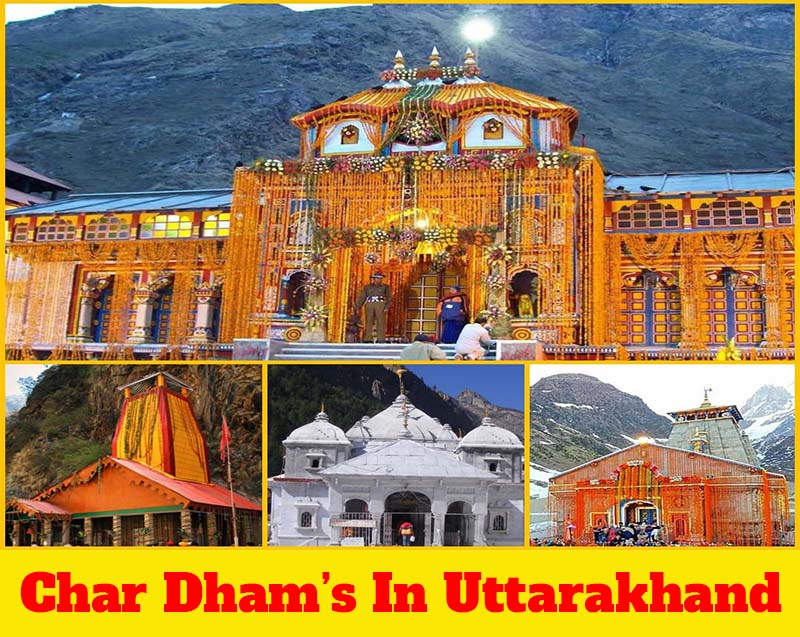
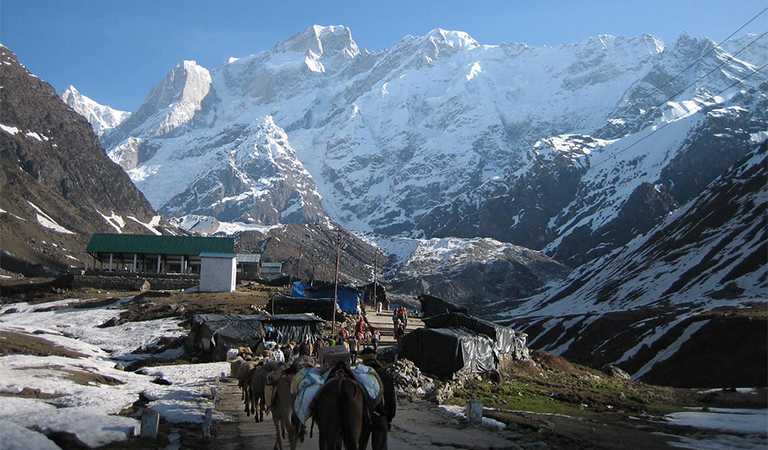
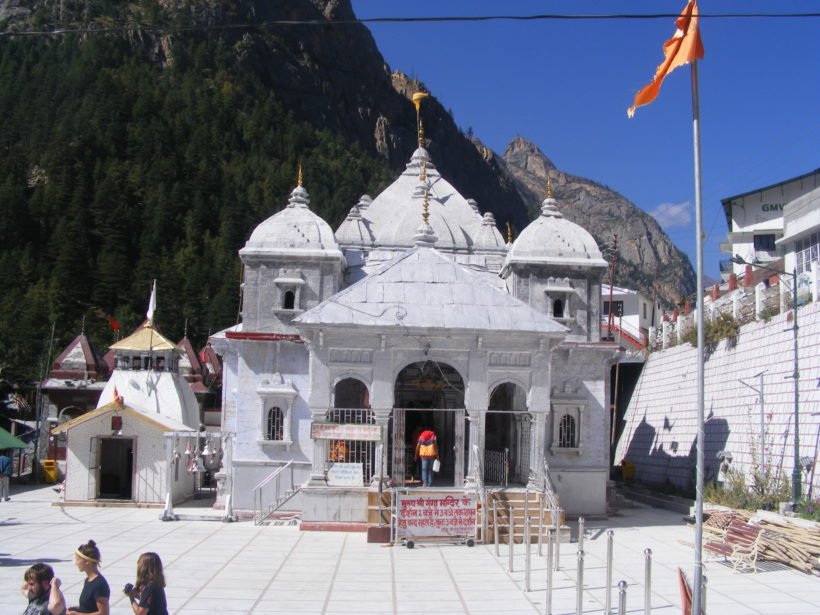
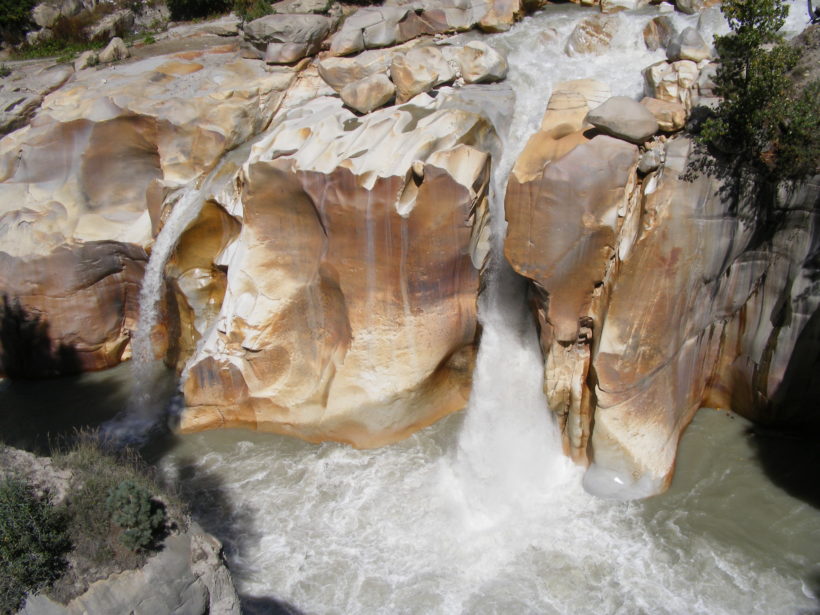

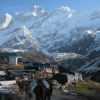
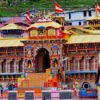
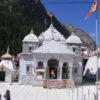
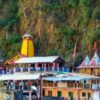




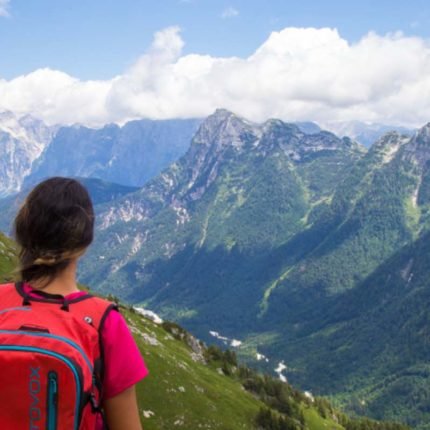
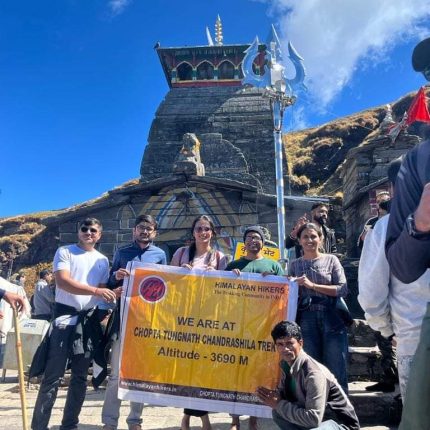
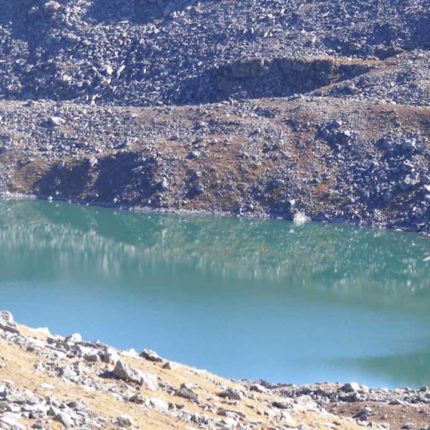
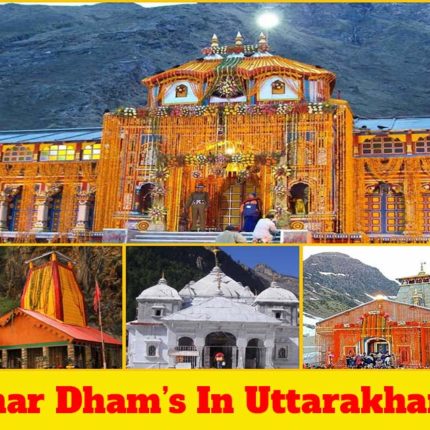
Reviews
There are no reviews yet.